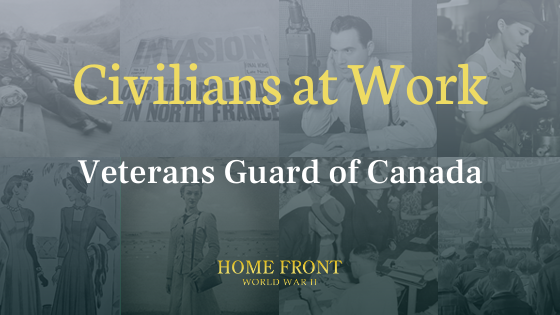Veterans Guard of Canada
The Second World War was only a generation after the Great War. WWI was fresh in people’s mind, particularly because so many people who had served in the First World War were still living! Upon the outbreak of WWII, veterans of WWI attempted to enlist to once again fight on the front lines for Canada. However, these men, most of which were over 40 years old, were turned away; they were deemed too old to serve.
This did not deter these determined men, though. They convinced the Canadian government that they offered invaluable military service that could not be overlooked. The government responded by creating the Veteran’s Home Guard in May 1940. This organization was later renamed the Veteran’s Guard of Canada (VGC).
BOWMANVILLE CAMP. IMAGE FROM WIKIMEDIA COMMONS.
The VGC had two main roles. Some of the men were involved in domestic protection. They were specifically tasked with protecting military property on Canadian soil. This included factories, munition stores, and other military holdings. The second main role of the VCG was to guard at internment camps. Taking on this function allowed for younger servicemen to be available for overseas service. The Veteran’s Guard was even involved in a three-day uprising of POWs in 1942 at the Bowmanville camp in Ontario!
The VCG was disbanded in 1947 following the end of WWII. At its peak, the VCG comprised of around 10 000 men. Many of the men involved in the VCG were Francophones and men from across Canada were part of the Veteran’s Guard.
Transitioning to a war economy changed the roles of civilians. Some new industries were created for the sole purpose of serving the war effort, and in other cases existing industries ramped up production to meet new wartime demands. In this blog series learn about how civilians, including men, women, and children, were put to work in new ways.


